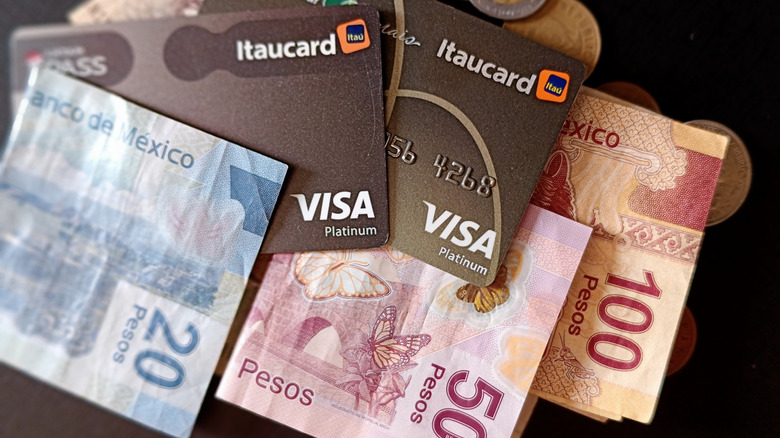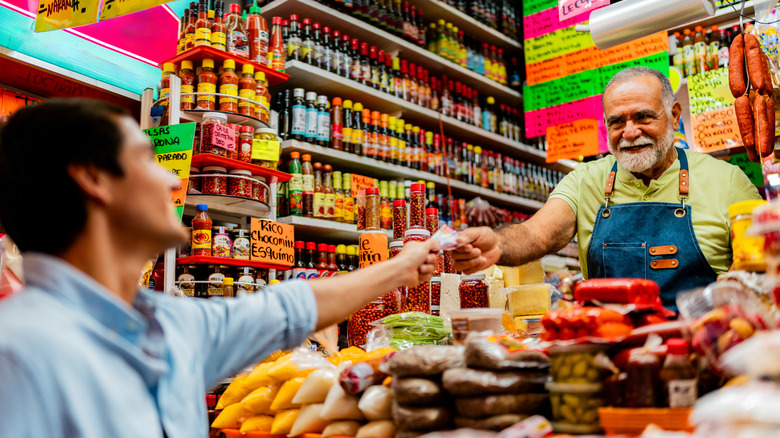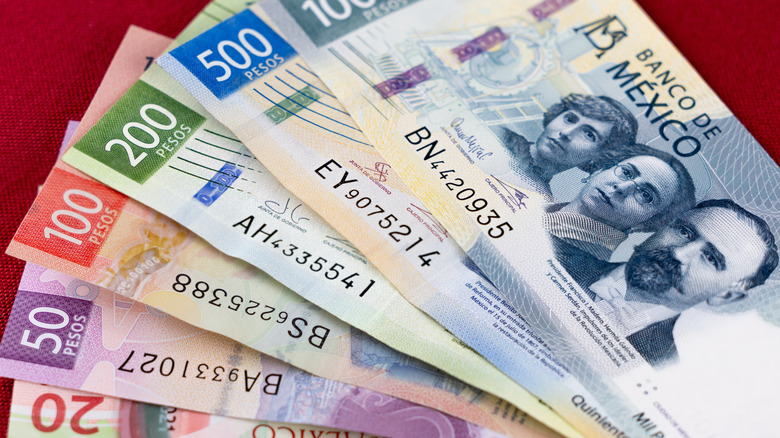Avoid This Common Money Mistake While Exploring Mexico
It's no wonder that Mexico draws more American tourists than any other foreign destination. After all, the U.S.' neighbor to the south is an enchanting land of white sand beaches, verdant jungles, sweeping deserts, rugged canyons, towering volcanoes, and enchanting colonial towns, like these places in Mexico that every history buff should travel to. Mexico also boasts a delectable, mouth-watering cuisine served everywhere from five-star restaurants with jaw-droppping views to humble taco carts, along with ample opportunities for shopping.
As tempting as it is to jump on that next flight to Puerto Vallarta or Cancún, it pays to do your homework before traveling south of the border. While the country is generally safe for tourists, there are a few dangerous vacation spots that it's best to steer clear of. Of course, there are other key things to be aware of, such as this confusing rule change for crossing into the country. Another thing to keep in mind is that when it comes to money, it's best to carry some cash. While your card may cover your expenses at larger places and in tourist areas, it may not get you too far once you wander out of the gates of the resort.
South of the border, cash is still king
Mexico is a modern country where all major credit cards are accepted, but that may only apply to large stores, resorts and hotels, shopping centers, and some restaurants. While many people in North America largely go cashless these days, Mexico is still a place where you need to carry some actual, paper money and coins. This especially goes for places a bit off-the-beaten path: the food stalls, mom-and-pop shops, street vendors, and hole-in-the-wall eateries where much of Mexico's magic happens. Many such establishments aren't set up to take cards, and then ones that do may tack on a service charge to cover bank fees.
While U.S. dollars are happily accepted in much of the country, not everywhere will take your greenbacks. If they do, you're likely to get a very unfavorable exchange rate, so it's best to withdraw pesos from the ATM or exchange dollars at banks or money exchanges (though not at airports or hotels, where exchange rates aren't as good). To avoid getting dinged by commissions, it may be best to buy some pesos at your bank back home before setting off. Whatever the case, always having some local currency on hand will not just make your vacation more convenient, it will also make the experience richer — not to mention cheaper.
Know your Mexican coins and bills
Mexico's official currency is the Mexican peso, which is represented by "$." This can be confusing, so to avoid mixing it up with other currencies using the same sign, the peso is often listed as M$, MX$, or MEX$. Each peso is subdivided into 100 centavos, which are represented with the "¢" sign. Mexico uses both coins ranging from 5¢ – $20, as well as the following banknotes: $20, $50, $100, $200, $500, and — on rare occasions — $1,000 peso bills. These can be withdrawn at over 70,000 ATMs all throughout the country, though if you are headed into deeply rural or isolated locations, it's best to stock up ahead of time.
One convenient option for traveling in Mexico (and other countries) is Wise. This app allows you to load the currency from your home country, which is then automatically converted to Mexican pesos (or whatever currency you need) at real-time exchange rates. You can also get a physical Wise card to use at ATMs, which is a good way to avoid paying international fees. This U.K.- based service is available in 160 countries, covering over 40 different currencies worldwide. Now that you have the money figured out, here are some underrated Mexican tourists destinations to add to your bucket list.


